Topic 1. Sources of Int ’ l Law

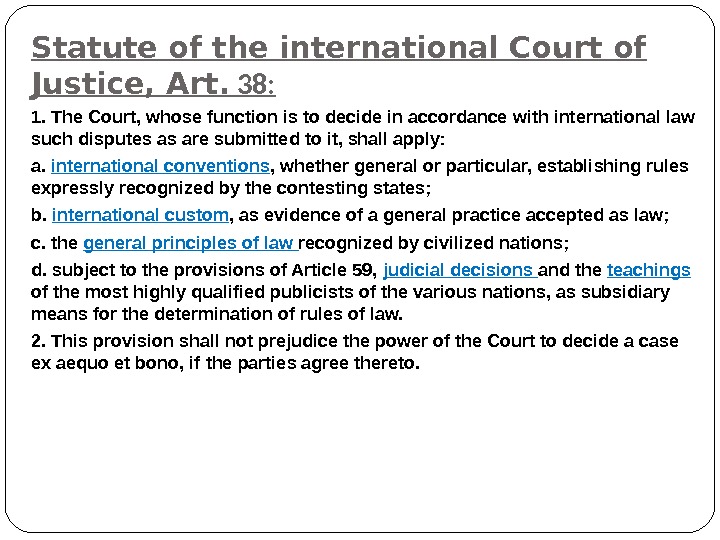
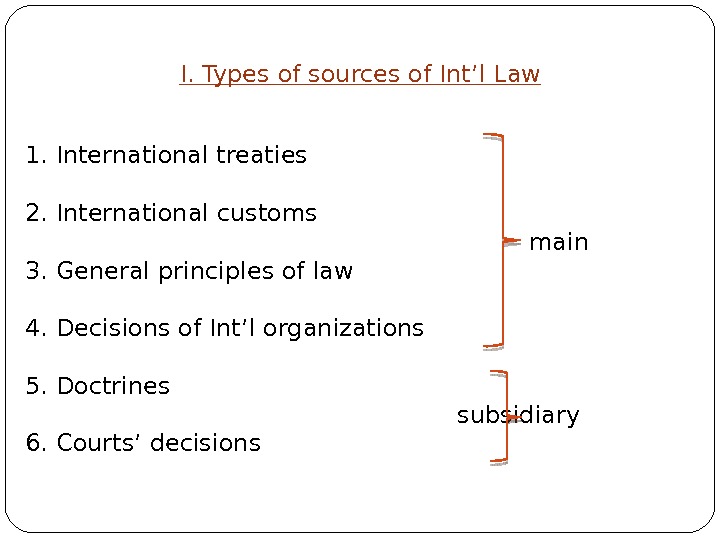
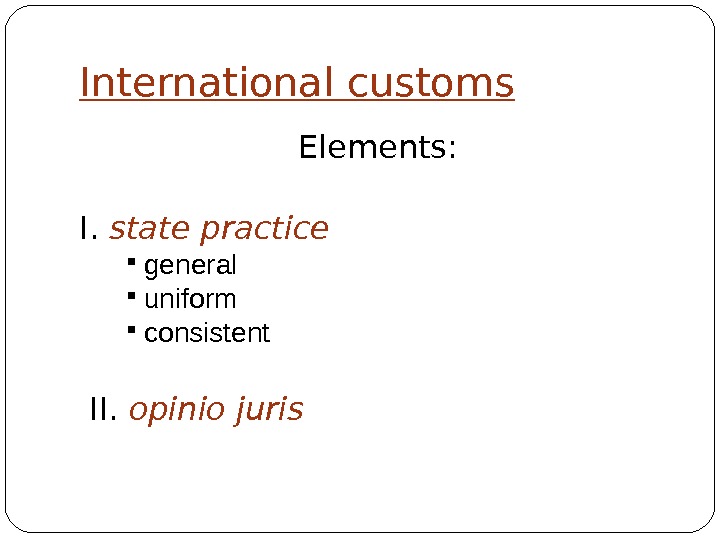
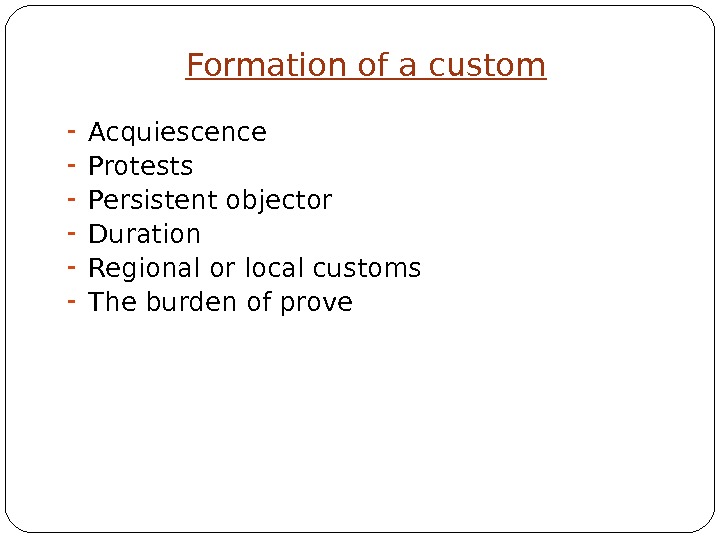
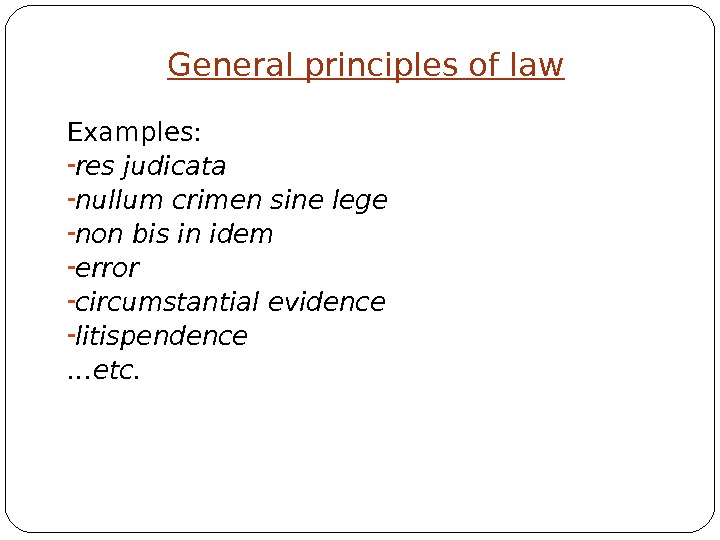

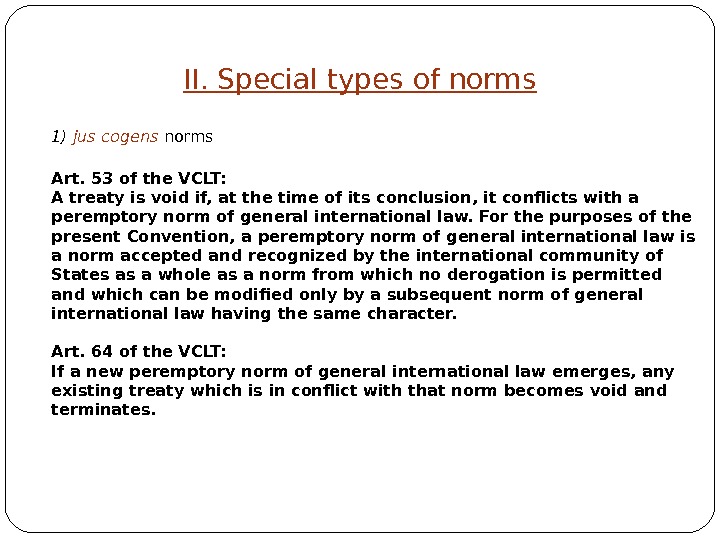
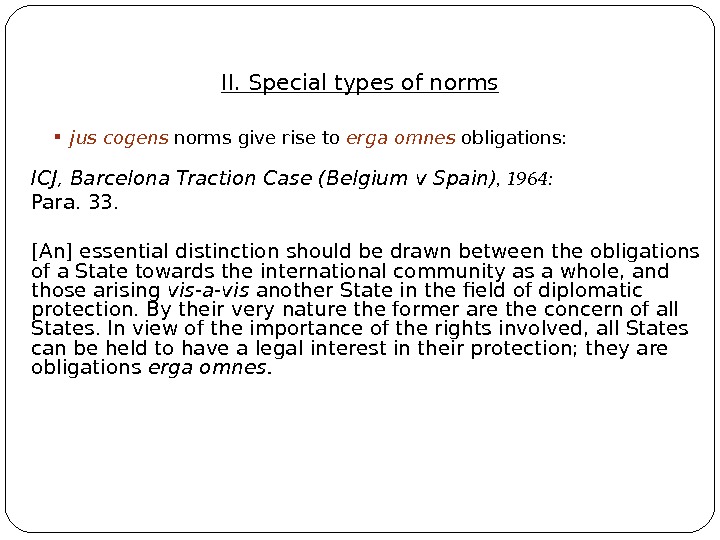
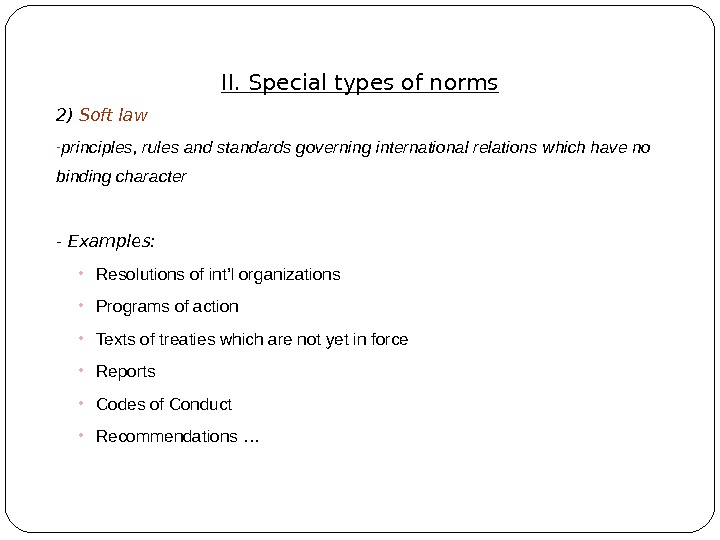
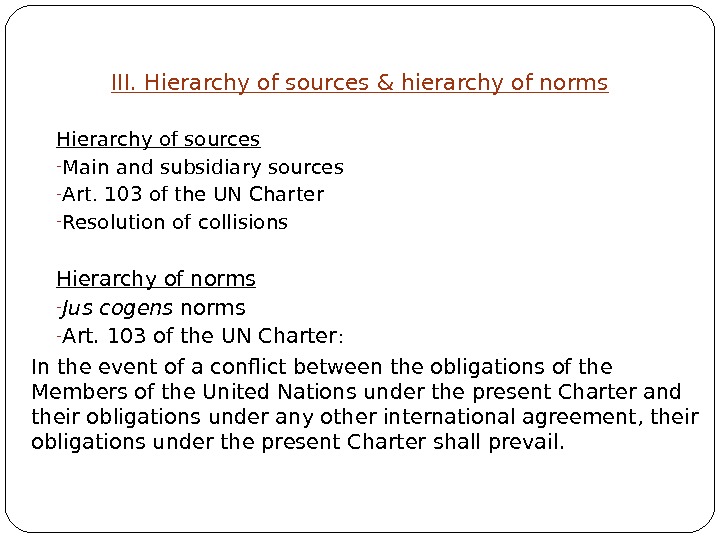
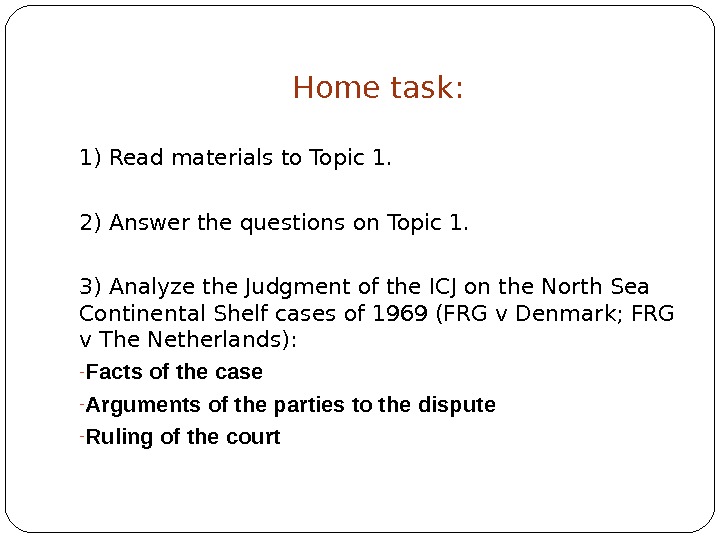
- Размер: 647 Кб
- Количество слайдов: 12
Описание презентации Topic 1. Sources of Int ’ l Law по слайдам
 Topic 1. Sources of Int ’ l Law International Law. Part 1. Basics of International Law.
Topic 1. Sources of Int ’ l Law International Law. Part 1. Basics of International Law.
 Statute of the international Court of Justice, Art. 38: 1. The Court, whose function is to decide in accordance with international law such disputes as are submitted to it, shall apply: a. international conventions , whether general or particular, establishing rules expressly recognized by the contesting states; b. international custom , as evidence of a general practice accepted as law; c. the general principles of law recognized by civilized nations; d. subject to the provisions of Article 59, judicial decisions and the teachings of the most highly qualified publicists of the various nations, as subsidiary means for the determination of rules of law. 2. This provision shall not prejudice the power of the Court to decide a case ex aequo et bono, if the parties agree thereto.
Statute of the international Court of Justice, Art. 38: 1. The Court, whose function is to decide in accordance with international law such disputes as are submitted to it, shall apply: a. international conventions , whether general or particular, establishing rules expressly recognized by the contesting states; b. international custom , as evidence of a general practice accepted as law; c. the general principles of law recognized by civilized nations; d. subject to the provisions of Article 59, judicial decisions and the teachings of the most highly qualified publicists of the various nations, as subsidiary means for the determination of rules of law. 2. This provision shall not prejudice the power of the Court to decide a case ex aequo et bono, if the parties agree thereto.
 I. Types of sources of Int ’ l Law 1. International treaties 2. International customs main 3. General principles of law 4. Decisions of Int ’ l organizations 5. Doctrines subsidiary 6. Courts ’ decisions
I. Types of sources of Int ’ l Law 1. International treaties 2. International customs main 3. General principles of law 4. Decisions of Int ’ l organizations 5. Doctrines subsidiary 6. Courts ’ decisions
 International customs Elements : I. state practice general uniform consistent II. opinio juris
International customs Elements : I. state practice general uniform consistent II. opinio juris
 Formation of a custom — Acquiescence — Protests — Persistent objector — Duration — Regional or local customs — The burden of prove
Formation of a custom — Acquiescence — Protests — Persistent objector — Duration — Regional or local customs — The burden of prove
 General principles of law Examples: — res judicata — nullum crimen sine lege — non bis in idem — error — circumstantial evidence — litispendence … etc.
General principles of law Examples: — res judicata — nullum crimen sine lege — non bis in idem — error — circumstantial evidence — litispendence … etc.
 Courts ’ decisions A subsidiary source Precedents in Int ’ l Law: Art. 59 of the Statute of the ICJ: “ The decision of the Court has no binding force except between the parties and in respect of that particular case ”. International or national courts ’ decisions?
Courts ’ decisions A subsidiary source Precedents in Int ’ l Law: Art. 59 of the Statute of the ICJ: “ The decision of the Court has no binding force except between the parties and in respect of that particular case ”. International or national courts ’ decisions?
 II. Special types of norms 1) jus cogens norms Art. 53 of the VCLT: A treaty is void if, at the time of its conclusion, it conflicts with a peremptory norm of general international law. For the purposes of the present Convention, a peremptory norm of general international law is a norm accepted and recognized by the international community of States as a whole as a norm from which no derogation is permitted and which can be modified only by a subsequent norm of general international law having the same character. Art. 64 of the VCLT: If a new peremptory norm of general international law emerges, any existing treaty which is in conflict with that norm becomes void and terminates.
II. Special types of norms 1) jus cogens norms Art. 53 of the VCLT: A treaty is void if, at the time of its conclusion, it conflicts with a peremptory norm of general international law. For the purposes of the present Convention, a peremptory norm of general international law is a norm accepted and recognized by the international community of States as a whole as a norm from which no derogation is permitted and which can be modified only by a subsequent norm of general international law having the same character. Art. 64 of the VCLT: If a new peremptory norm of general international law emerges, any existing treaty which is in conflict with that norm becomes void and terminates.
 II. Special types of norms jus cogens norms give rise to erga omnes obligations: ICJ, Barcelona Traction Case (Belgium v Spain) , 1964: Para. 33. [An] essential distinction should be drawn between the obligations of a State towards the international community as a whole, and those arising vis-a-vis another State in the field of diplomatic protection. By their very nature the former are the concern of all States. In view of the importance of the rights involved, all States can be held to have a legal interest in their protection; they are obligations erga omnes.
II. Special types of norms jus cogens norms give rise to erga omnes obligations: ICJ, Barcelona Traction Case (Belgium v Spain) , 1964: Para. 33. [An] essential distinction should be drawn between the obligations of a State towards the international community as a whole, and those arising vis-a-vis another State in the field of diplomatic protection. By their very nature the former are the concern of all States. In view of the importance of the rights involved, all States can be held to have a legal interest in their protection; they are obligations erga omnes.
 II. Special types of norms 2) Soft law — principles, rules and standards governing international relations which have no binding character — Examples: • Resolutions of int ’ l organizations • Programs of action • Texts of treaties which are not yet in force • Reports • Codes of Conduct • Recommendations …
II. Special types of norms 2) Soft law — principles, rules and standards governing international relations which have no binding character — Examples: • Resolutions of int ’ l organizations • Programs of action • Texts of treaties which are not yet in force • Reports • Codes of Conduct • Recommendations …
 III. Hierarchy of sources & hierarchy of norms Hierarchy of sources — Main and subsidiary sources — Art. 103 of the UN Charter — Resolution of collisions Hierarchy of norms — Jus cogens norms — Art. 103 of the UN Charter : In the event of a conflict between the obligations of the Members of the United Nations under the present Charter and their obligations under any other international agreement, their obligations under the present Charter shall prevail.
III. Hierarchy of sources & hierarchy of norms Hierarchy of sources — Main and subsidiary sources — Art. 103 of the UN Charter — Resolution of collisions Hierarchy of norms — Jus cogens norms — Art. 103 of the UN Charter : In the event of a conflict between the obligations of the Members of the United Nations under the present Charter and their obligations under any other international agreement, their obligations under the present Charter shall prevail.
 Home task: 1) Read materials to Topic 1. 2) Answer the questions on Topic 1. 3) Analyze the Judgment of the ICJ on the North Sea Continental Shelf cases of 1969 (FRG v Denmark; FRG v The Netherlands): — Facts of the case — Arguments of the parties to the dispute — Ruling of the court
Home task: 1) Read materials to Topic 1. 2) Answer the questions on Topic 1. 3) Analyze the Judgment of the ICJ on the North Sea Continental Shelf cases of 1969 (FRG v Denmark; FRG v The Netherlands): — Facts of the case — Arguments of the parties to the dispute — Ruling of the court
